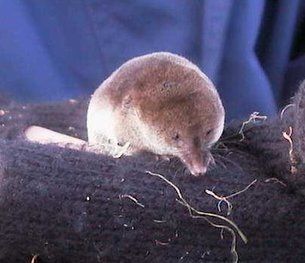

Jersey's shrew population could have dropped due to high numbers of birds of prey on the island.
A recent survey of small mammal numbers for the Department of the Environment failed to find enough shrews to assess population levels.
The study aimed to find out how numbers of wood mice, vole, lesser white-toothed and millet's shrew compared with a previous study in 1998.
Ecologist Mike Stentiford MBE said: “There has to be a reason for a decrease in shrew numbers if this is the case, and the most likely reason is the increase in numbers of birds of prey, as they are doing very well at the moment over here. Shrews are the main prey of barn owls and kestrels and Jersey has a healthy population of birds of prey.
“All these small mammals are prolific breeders so there should be lots around; however, shrews do have a crazy life. They have to eat their own body weight every three hours or they die. They are always frantic and never stay still. That may have something to do with spotting them, because they are prolific.”
This is the first survey of trends in small mammal populations on the island for 16 years and the report recommended more surveys should be carried at regular intervals to better assess the distribution of small mammals across habitats.
Ecological surveys are a legal requirement before many types of development can proceed and island-wide surveys can be required by Multi-Environmental Agreements (MEAs) such as the Bern Convention, and the Conventions of Biological Diversity, which Jersey has signed up to.
Conventions aside, sometimes observation of other species is the best way to work out how well a creature is doing.
Mike said: “If shrew numbers are lower it is likely to be because of predators and it's not necessarily something to be worried about if there are still high numbers of other rodents such as wood mice, field mice or voles.
“While having an idea of mammal numbers is always useful, a healthy population of birds of prey indicates there is plenty of food for them. If the number of birds of prey drops, we would have to look at if that was due to lack of food. It's all a balance between creatures at different points in the food chain.”
Comments
Comments on this story express the views of the commentator only, not Bailiwick Publishing. We are unable to guarantee the accuracy of any of those comments.